Reconstruction of Stepan Repin’s Paintings
25 October 2019 • Lesia Khomenko
In this work, I use an archive of paintings by my grandfather Stepan Repin (1921–2011). He served in the 1st Ukrainian Front during WW2 and graduated the Kharkiv Art Institute where he studied under Mykhailo Deregus. In the post-war period, my grandfather had been creating large-format genre paintings, but shortly landscape art had become his major occupation. Nevertheless, he created a series of figurative genre works on subjects relevant to that time period. For making these paintings, he would make preparatory drawings from life: fragments of bodies, clothing items, or some weaponry.
After grandfather died, I faced the problem of how to deal with the possession of someone else’s archive and more than that, of someone else’s biography. I interpreted and deconstructed his memories yet during his lifetime, creating my own narrative of historic events through his biography.
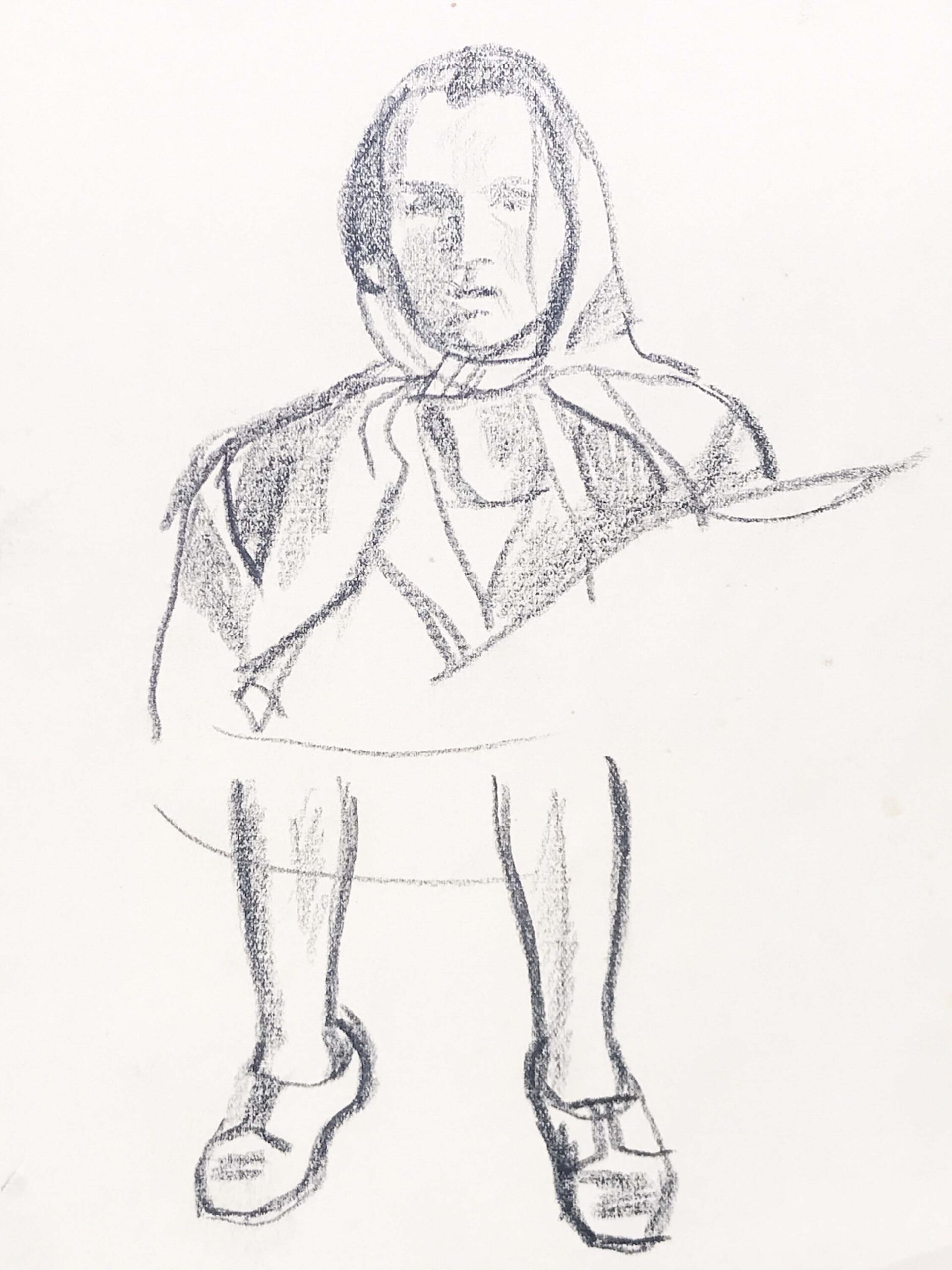
Comparing my grandfather’s art practice with mine, I see many similarities in expression, particularly, in a way we depict figures. However, there’s a conceptual difference in how we construct the picture. Judging from grandfather’s sketches, I see that he assembled his figurative paintings from parts, building a synthetic narrative, an unrealistic picture of the social realism era. Despite participating in WW2 and witnessing key moments in history, in paintings dedicated to the war, he created universal and depersonalised images. When Stepan Repin painted landscapes, they would be similar to real landscapes they were painted from. His landscape art, which was deliberately stylised but not synthetic – whether it was some fragments of a landscape with little figures or a landscape without people, released from the need for a narrative – was part of my grandfather’s biography, a mark of places where he lived or visited.
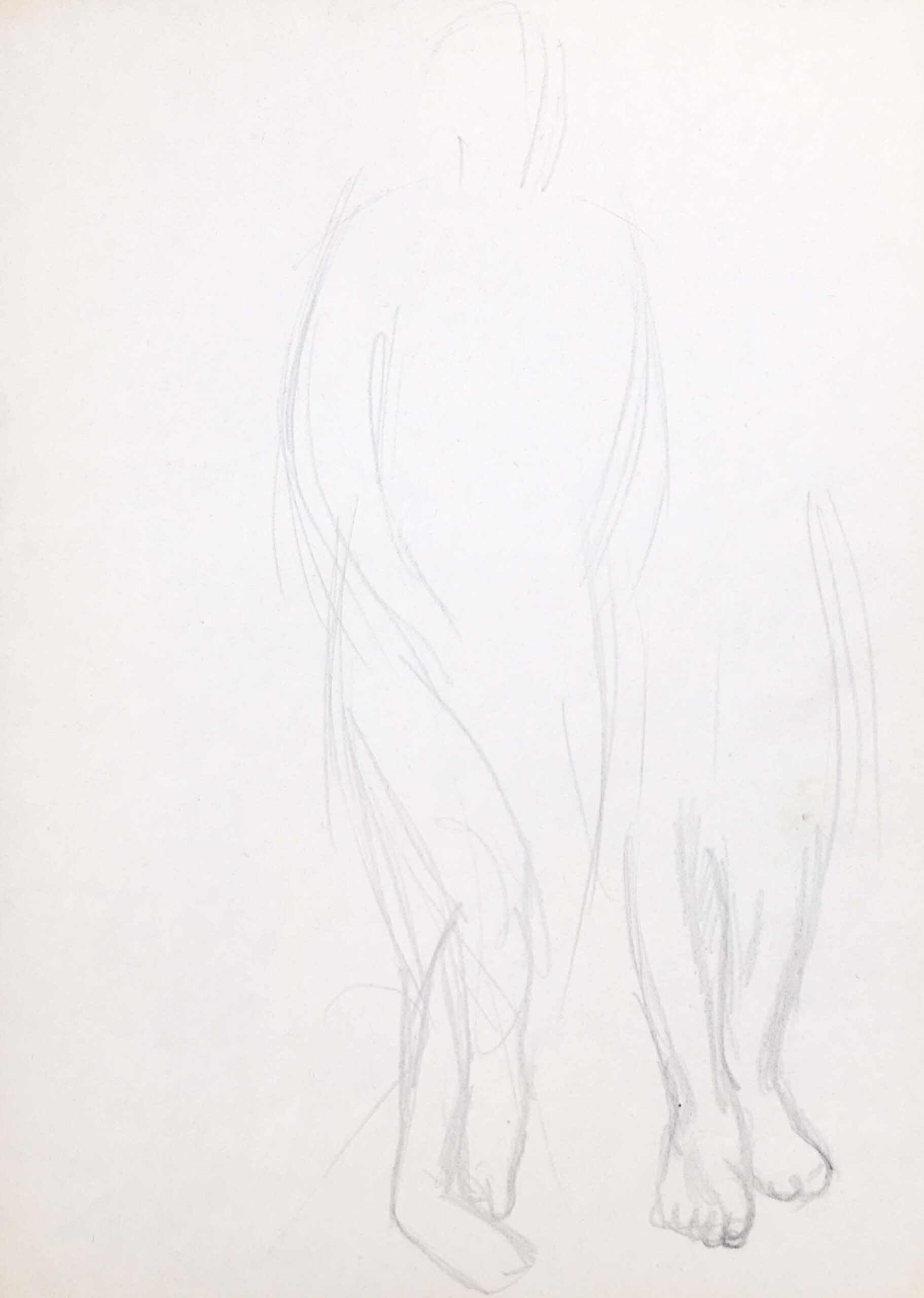
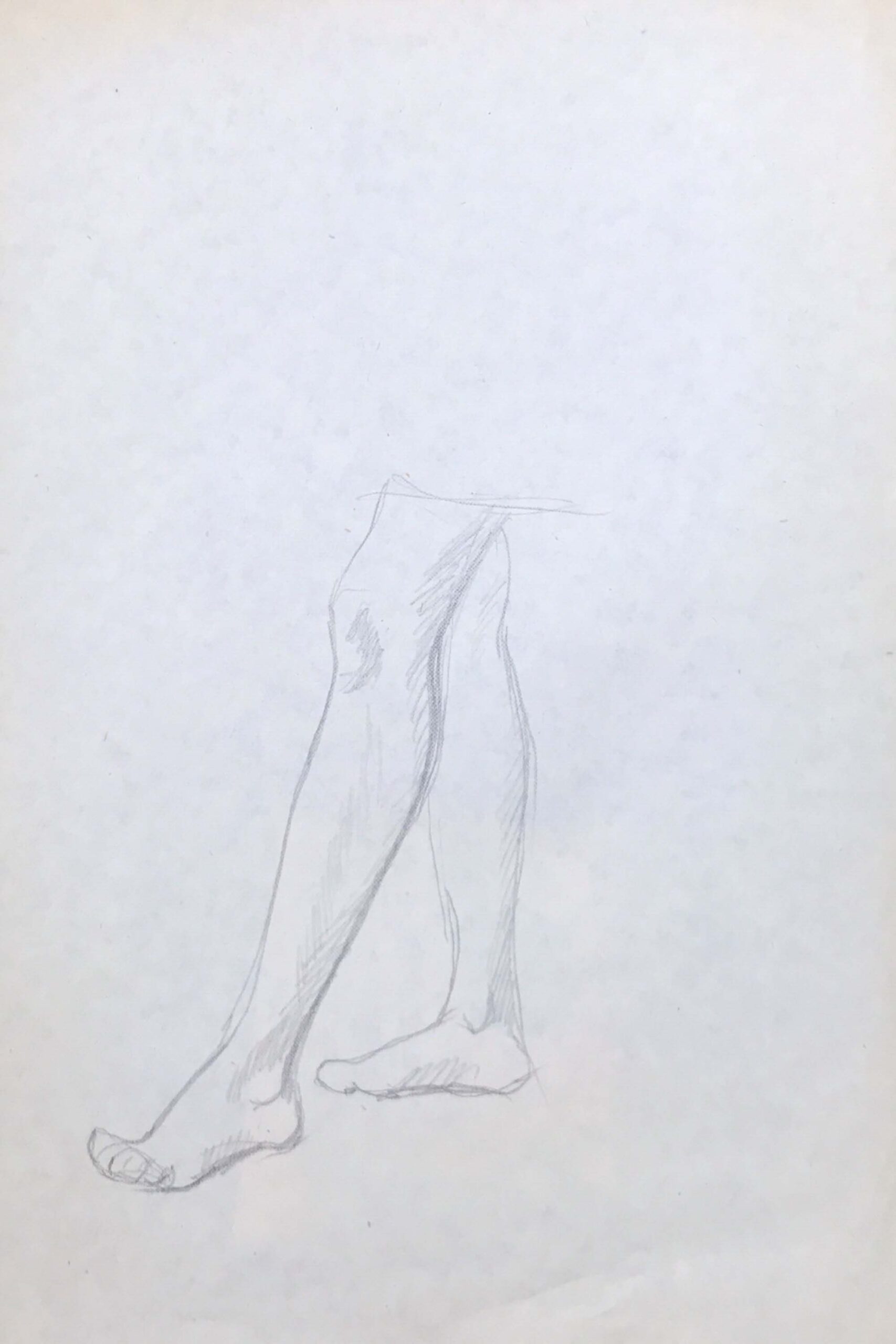
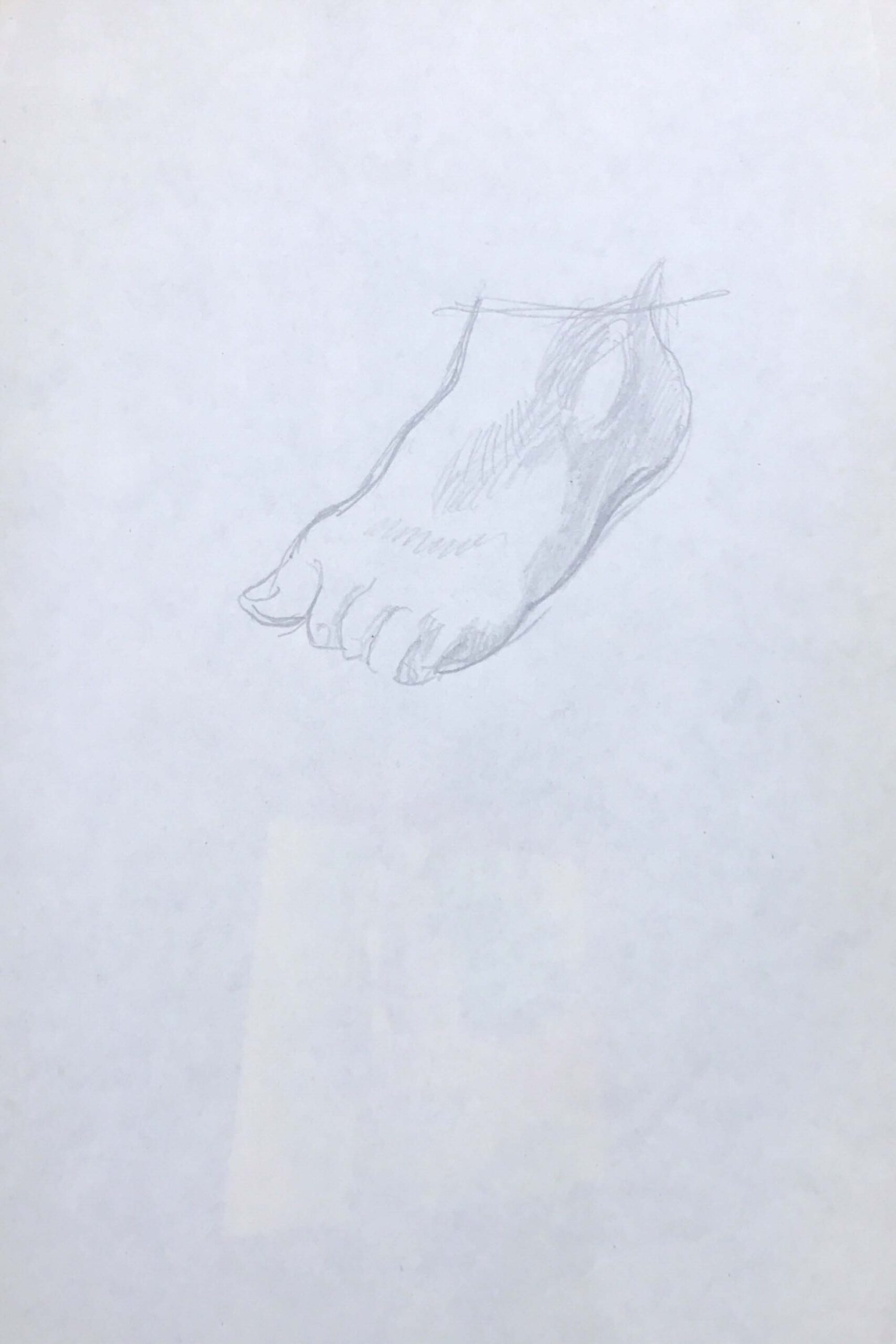
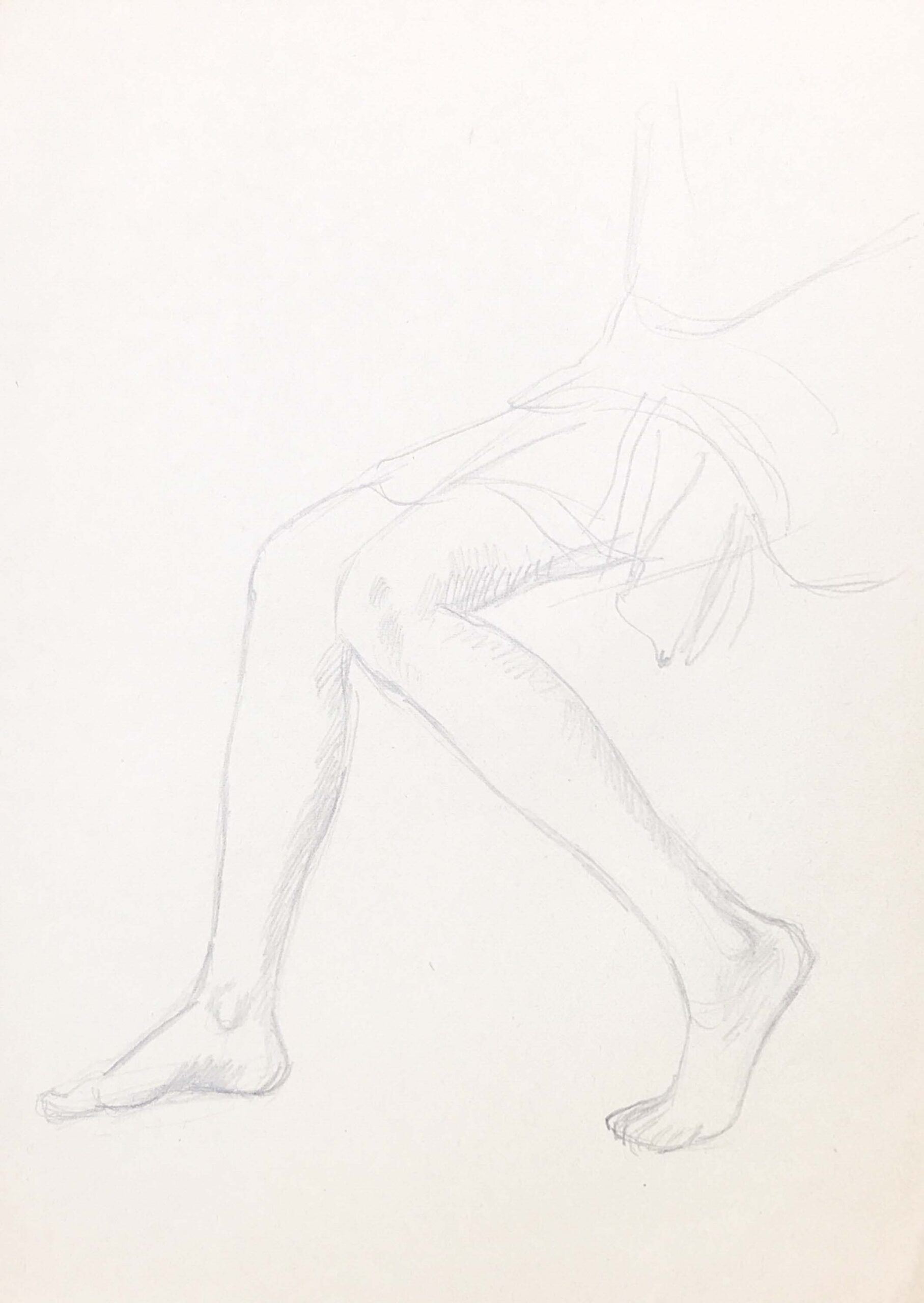
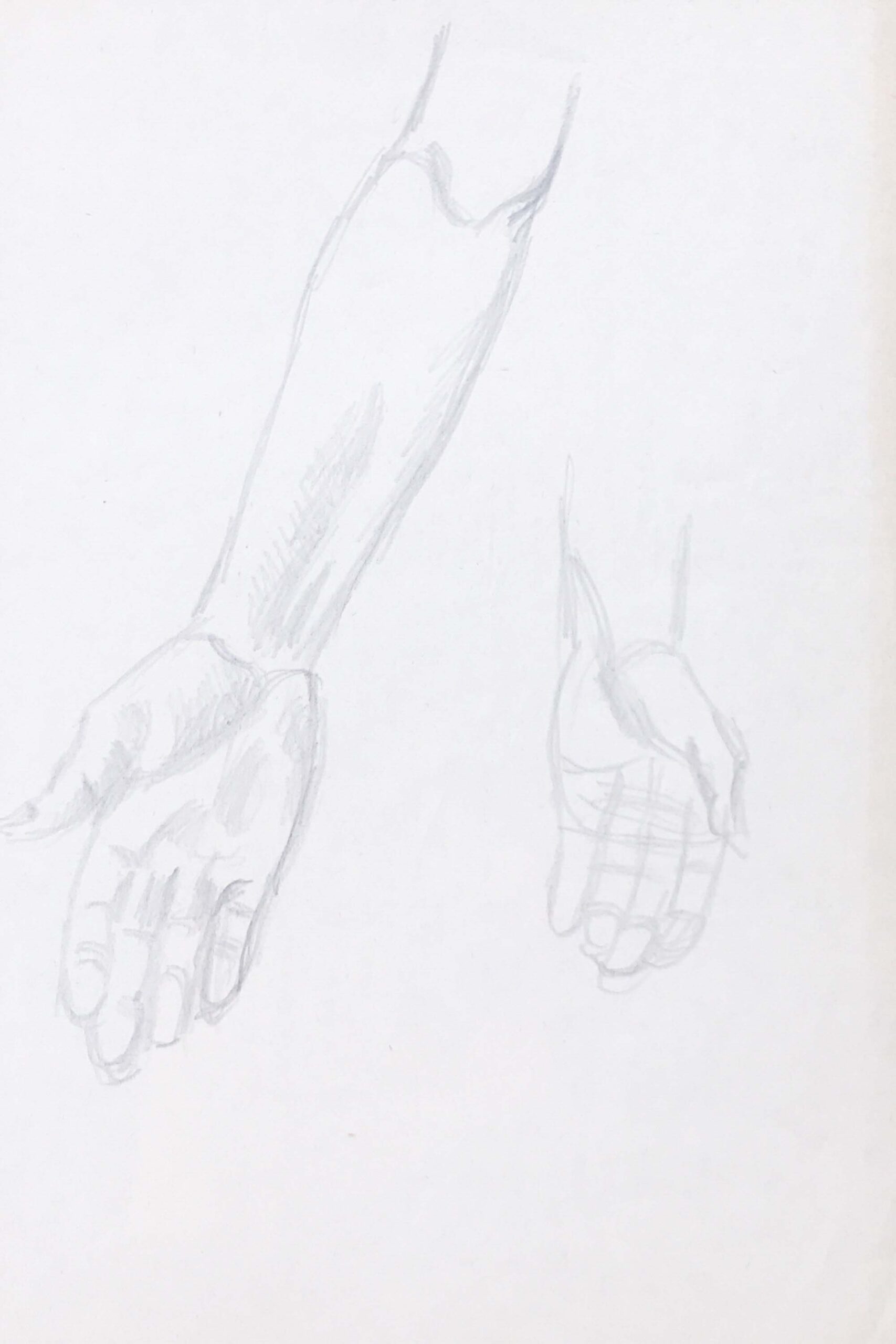
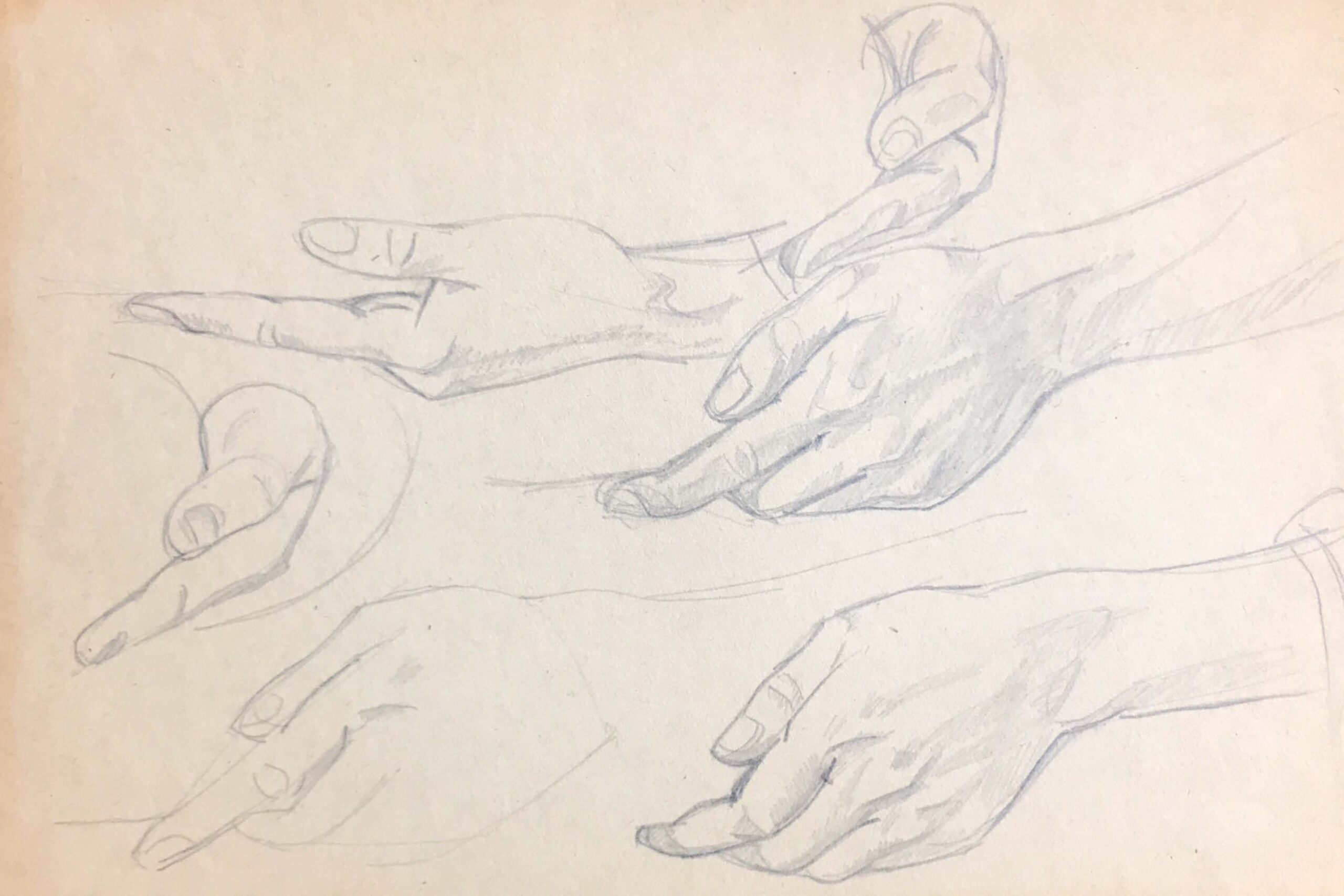
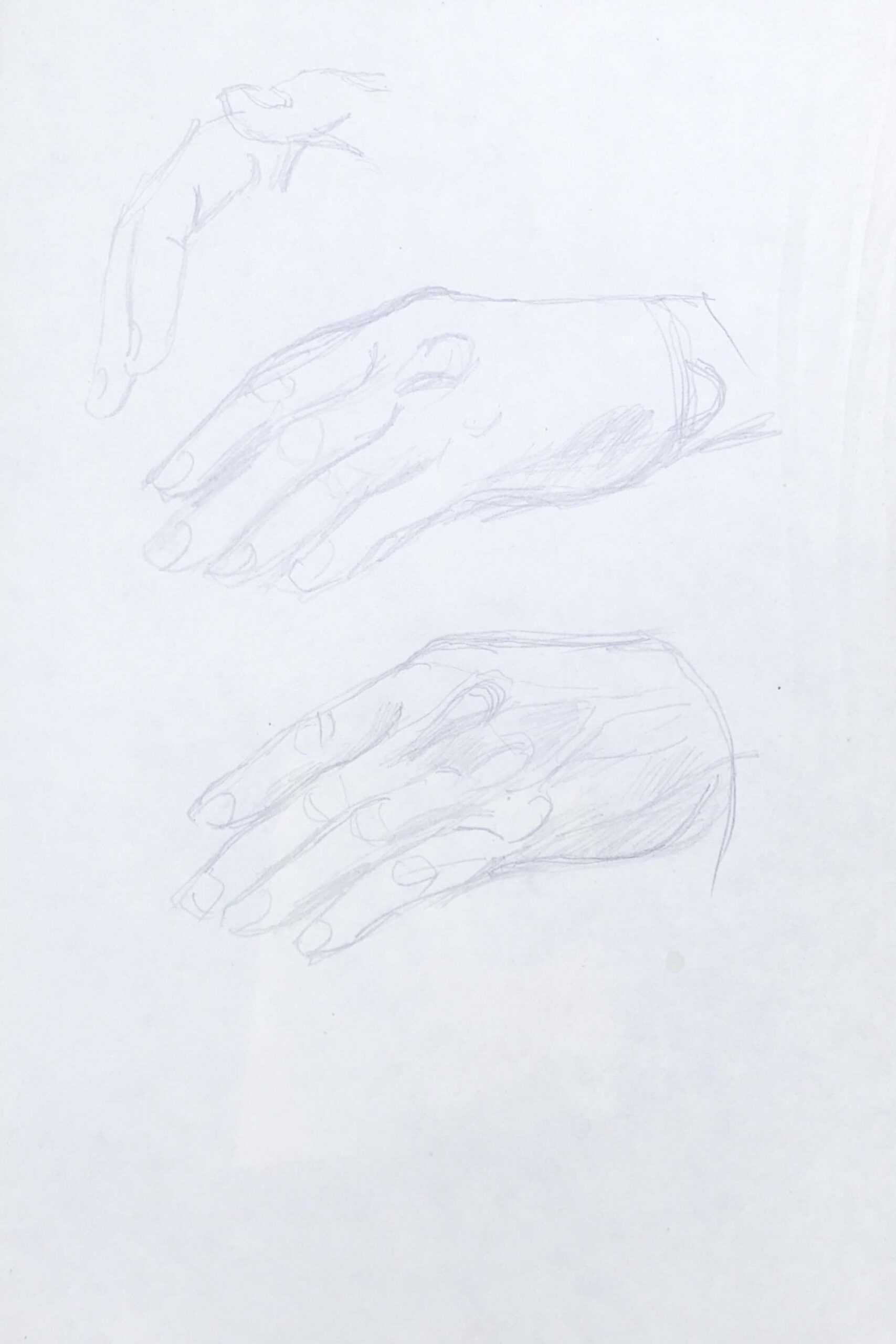

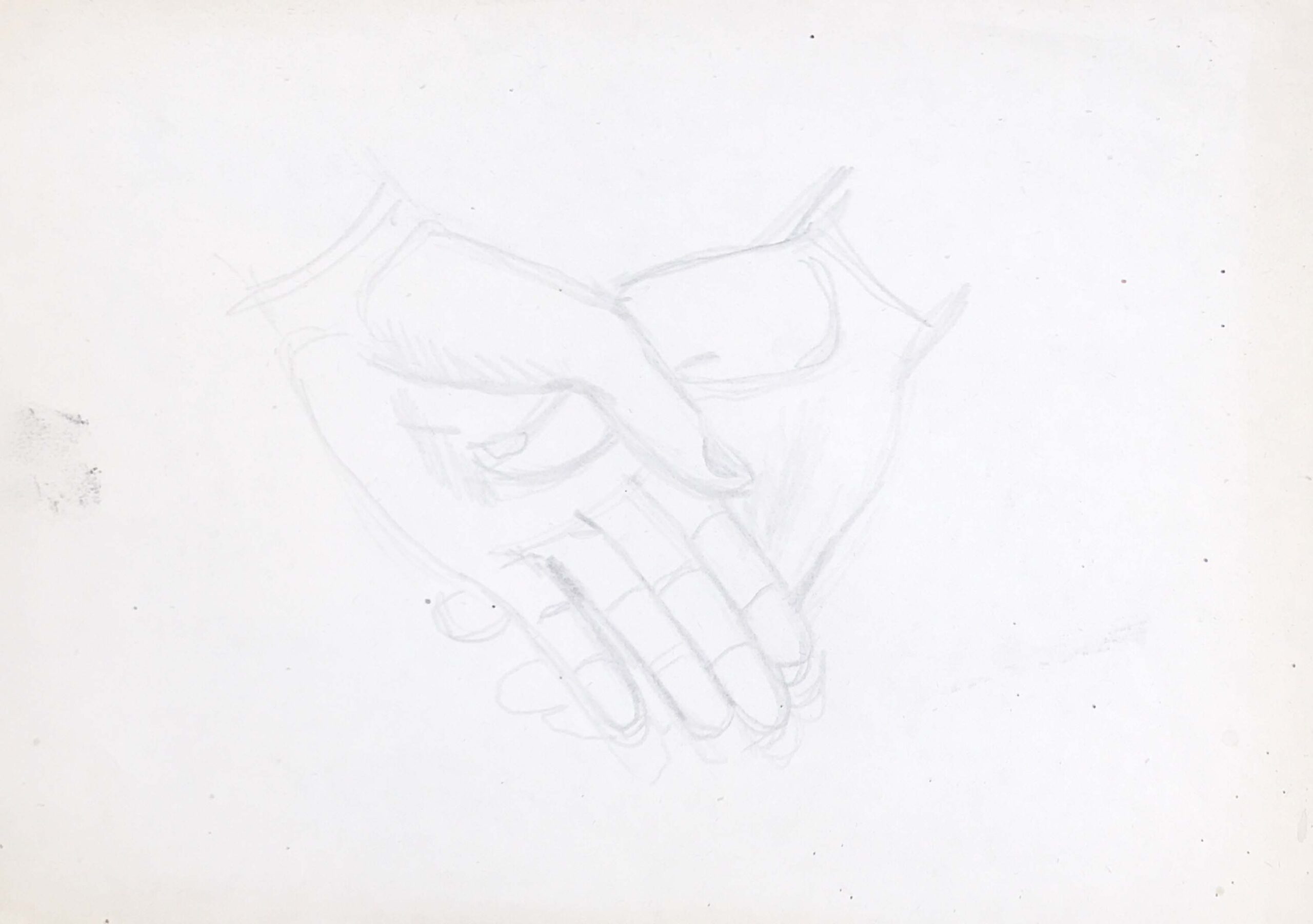
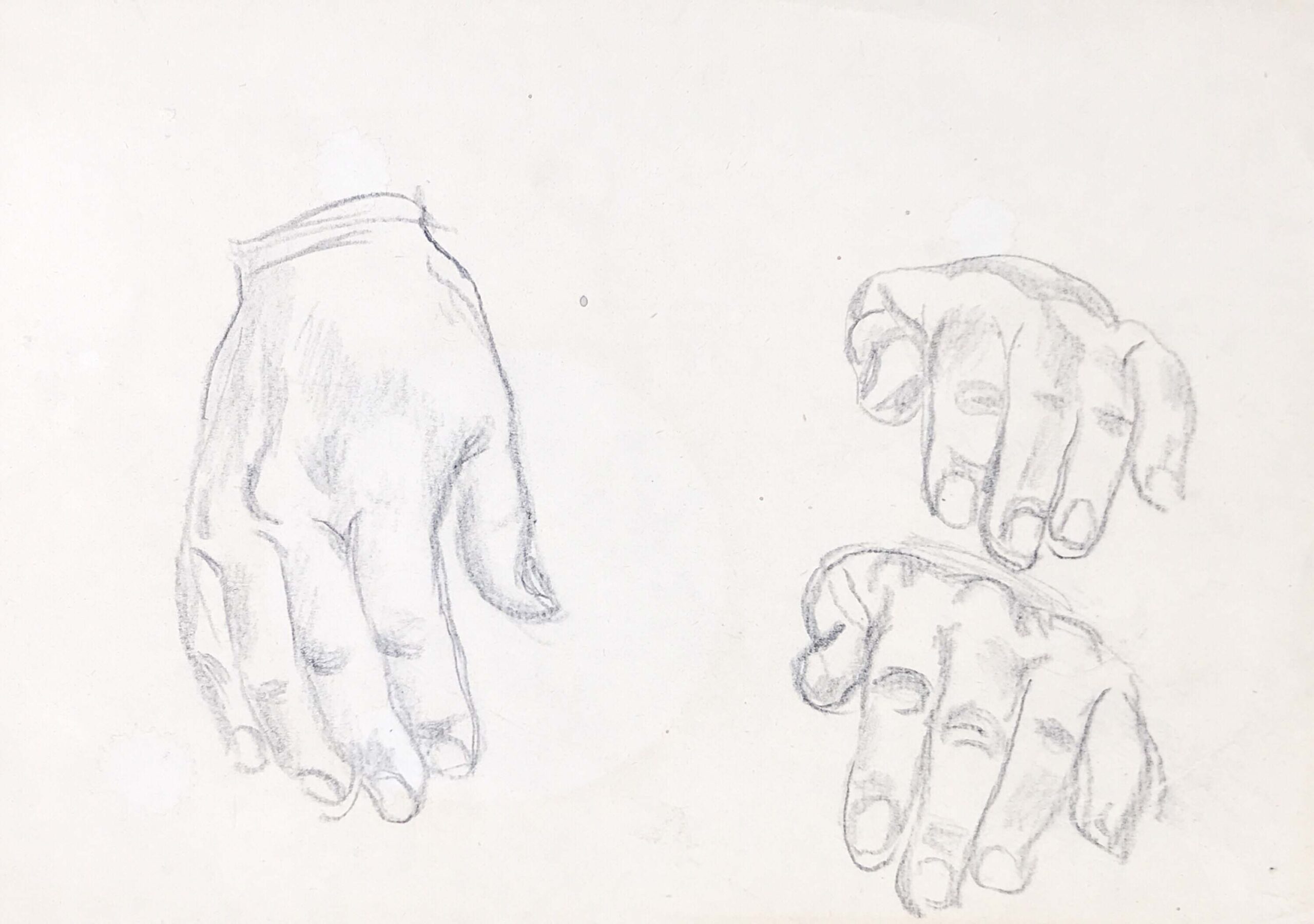
Now, I’m interested in working not only with Stepan Repin’s biography but also with his works. Feeling responsible towards another artist, who is also a loved one, I at the same time feel at the edge of ethics, like a corporation that absorbs another structure. This absorption of ‘my own self,’ self-appropriation, and colonisation appear to be the practices for exploring my own history.
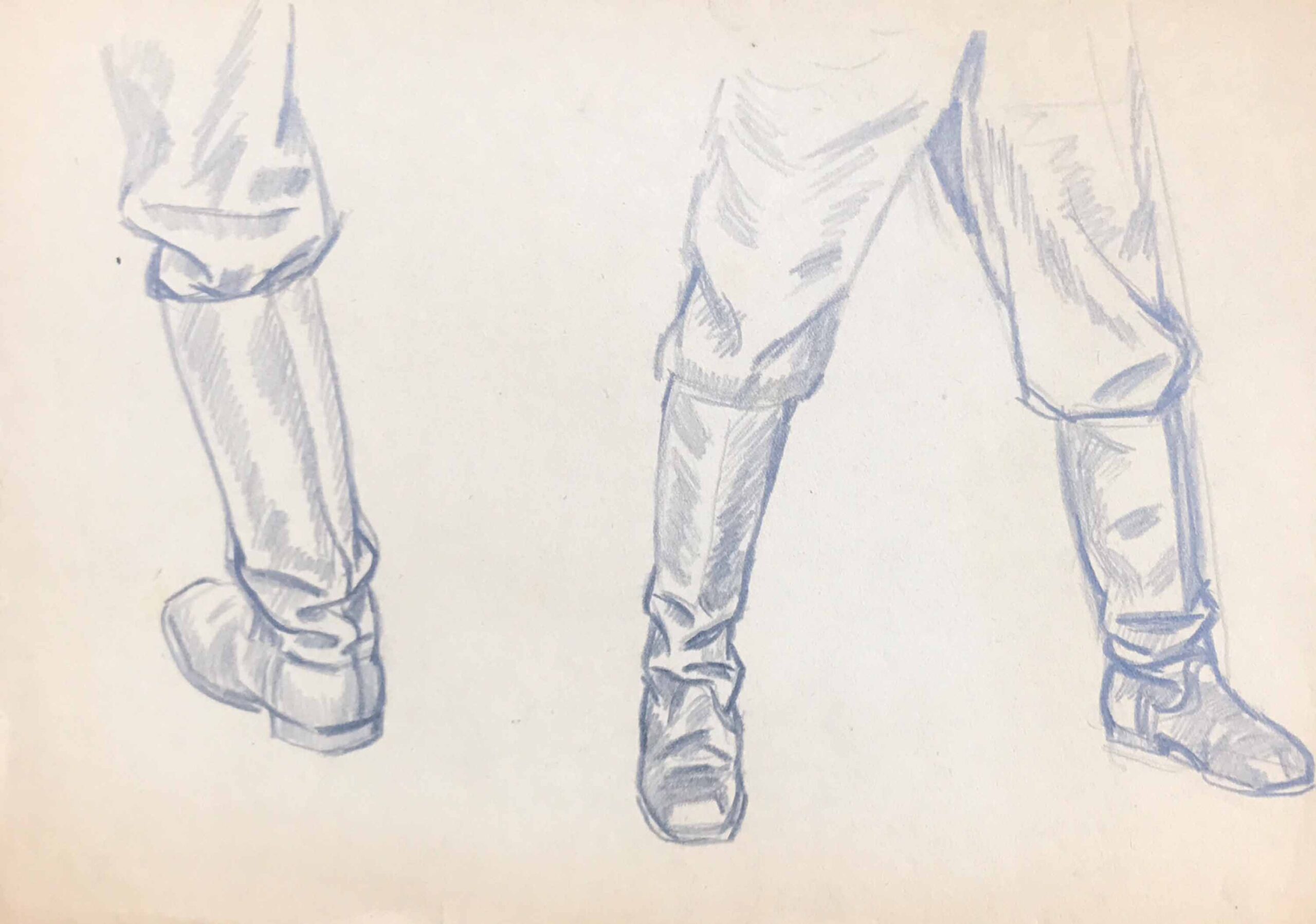
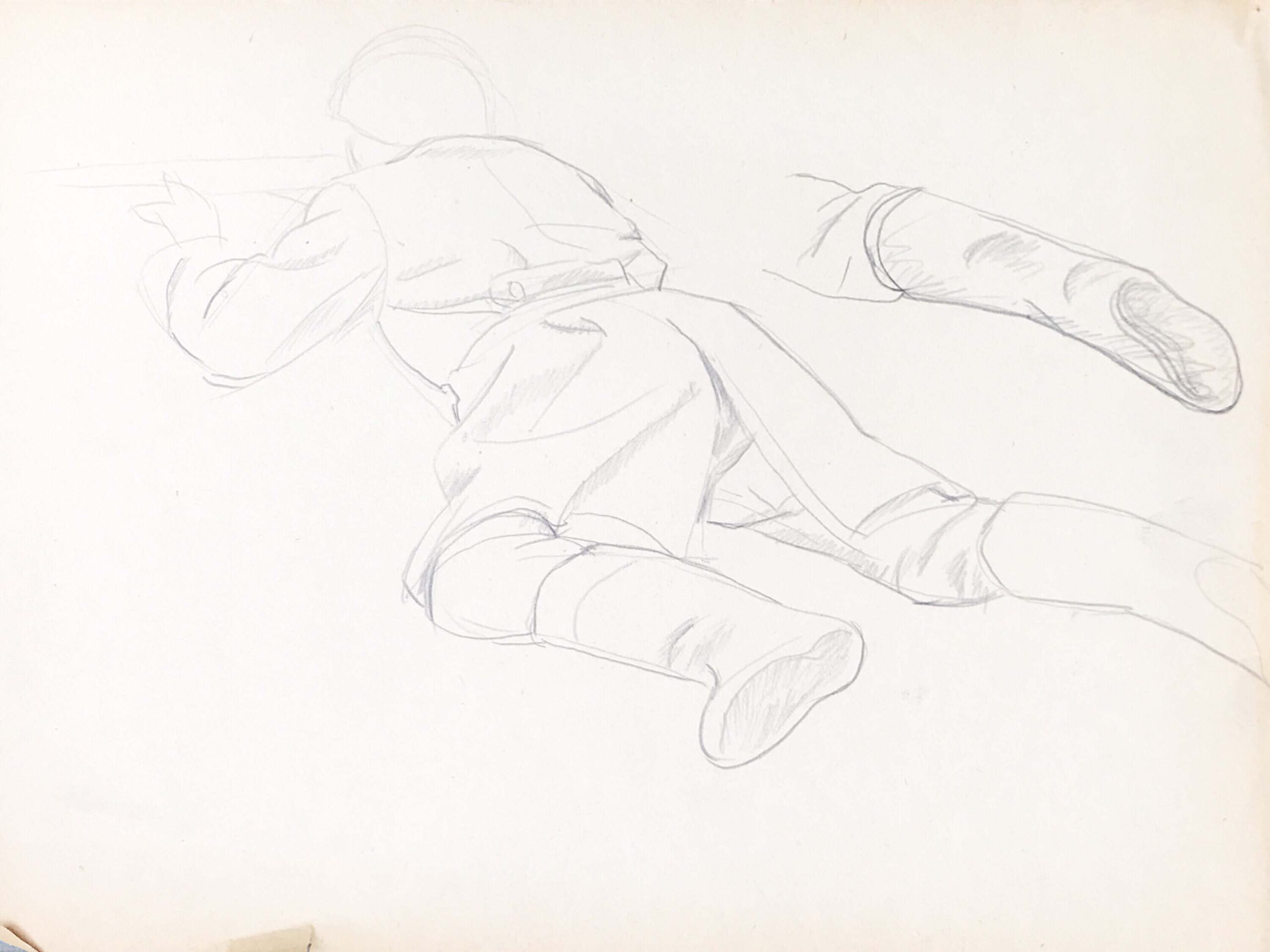
I’m interested in using the figurative in a modelled image: this way, I’m learning how the image emerges in my work. A figure acts as an imperative: it is both image and action.
In Reconstruction of Stepan Repin’s Paintings, I’m collecting images of the elements of figures from grandfather’s sketches. Refusing to follow the logic inherent in them, I view them accordingly to my own art practice. I’m interested in the genre division of painting: there’s historical painting, portrait, still life, landscape painting. Each genre has its visual and compositional principles. Reconstructing my grandfather’s works, I depict a figure as a landscape.
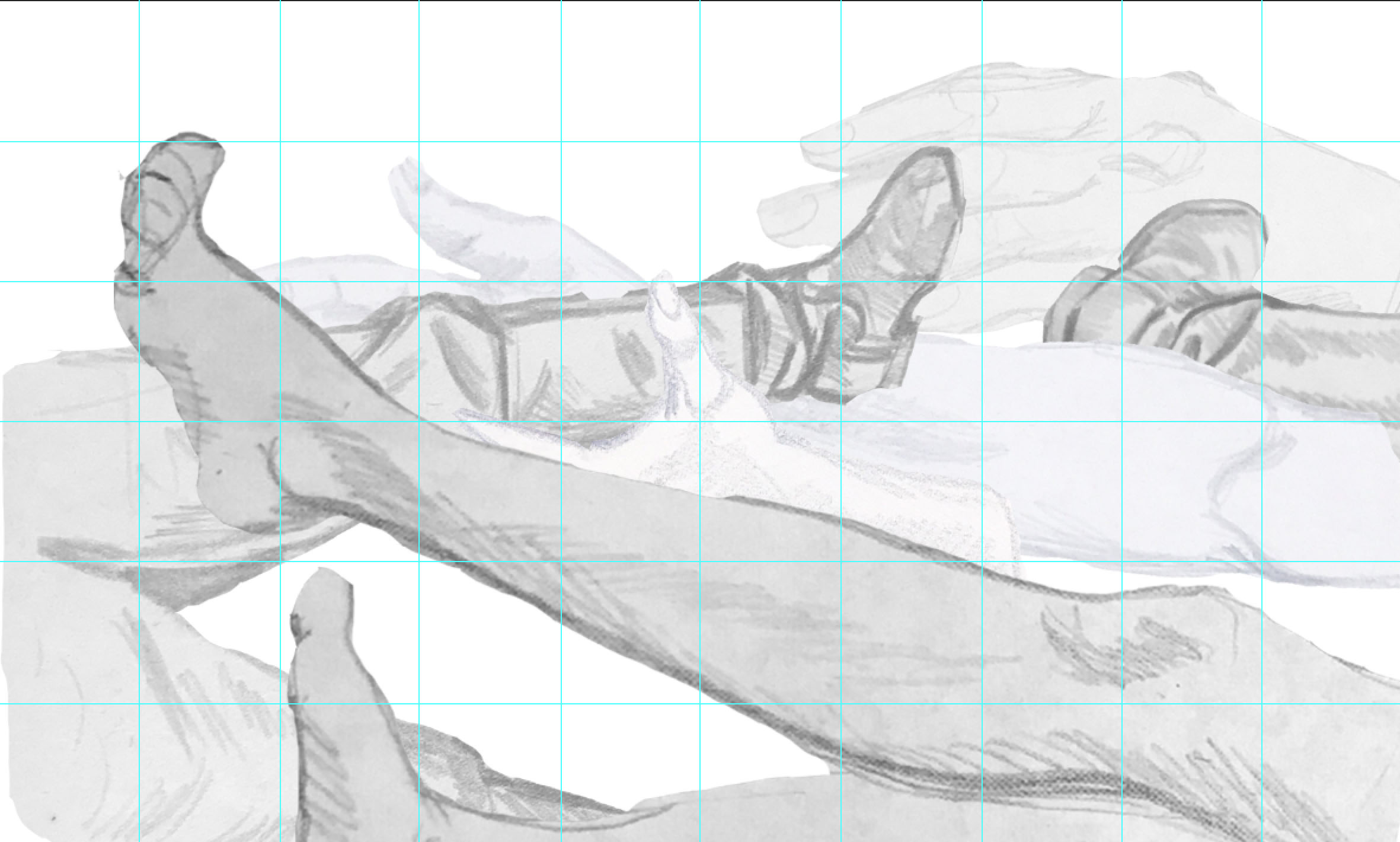
–
Lesia Khomenko is an author of paintings, installations, performances, and videos. In her works, she deconstructs the narrative nature of the image and turns paintings into objects. Owing to the interest in comparing history and myths, she reveals the means of visual manipulation. She constructs complex critical statements in her work. Lesia Khomenko is a co-founder and a member of the R.E.P. group, curator and author in an educational program of the Kyiv Academy of Media Arts dedicated to contemporary art. Lives in Kyiv.
–